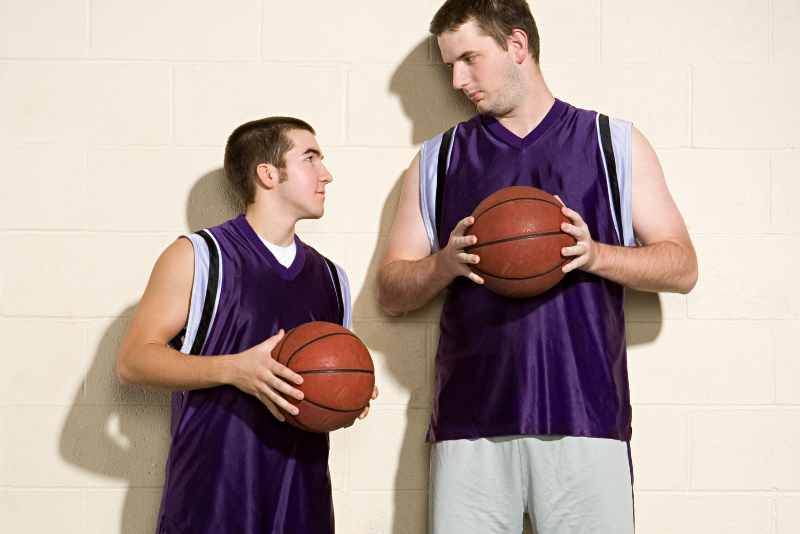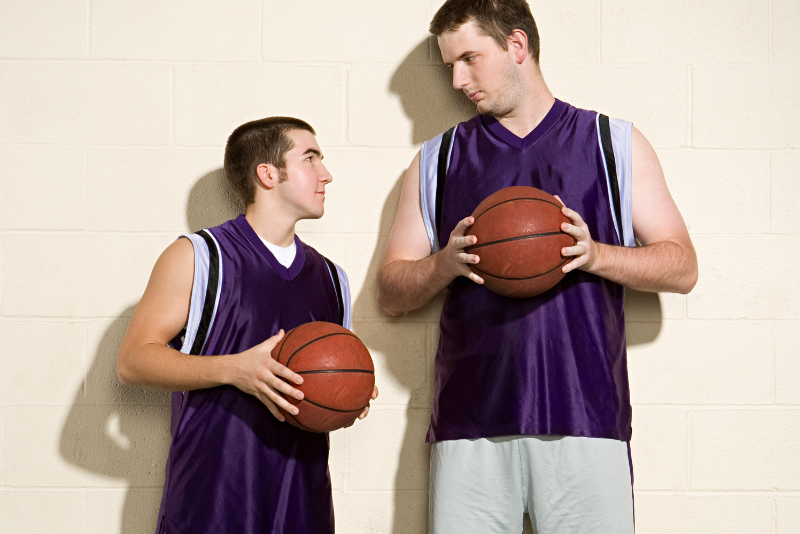Leveling the Field: Challenges and Adaptations for Short-Legged Athletes


In the realm of sports, physical attributes can sometimes determine the kind of advantage an athlete might have. Often, height and leg length are seen as an advantage in many athletic pursuits. However, what about those athletes who might not fit the 'tall' criteria? Do short-legged athletes face unique challenges?
The reality is that leg-length discrepancies among athletes often mean the difference between 1st, 2nd, or 3rd place and winning and losing. So how can they adapt to level the playing field? Let's delve into this interesting dimension of issues shorter athletes face in the sporting world.
The Athletic Challenge: Understanding the Hurdles of Short-Legged Competitors
Athleticism, by its very definition, is the amalgamation of skill, talent, determination, and physical prowess. However, as with all aspects of human variability, athletes come in various shapes and sizes. Among them, are short-legged athletes with a unique set of challenges they must overcome in their pursuit of excellence.
Below are some of the most common concerns individuals with short legs encounter in the sports arena.
1. Stride Length and Speed
From a purely biomechanical perspective, leg length impacts stride length and stride frequency in activities such as running. This means that an athlete with shorter legs must take more strides than their longer-legged counterpart to cover the same distance. While this might seem a minor discrepancy, in competitive sports where milliseconds matter, it's a significant concern. A longer stride can provide an advantage. Shorter legs mean a shorter stride, sometimes leading to slower speeds.
2. Reach Disadvantage
Sports that require a heightened vertical component, like basketball or volleyball, pose an inherent challenge to short-legged athletes. The reduced reach and jump height potential can sometimes act as a limiting factor, especially when pitted against taller opponents.
3. Societal and Psychological Barriers
Perhaps the most insidious of challenges is the societal stereotype that associates height with athletic prowess. Such preconceived notions can lead to biases during selections, potential sponsorships, and even the athlete's own self-belief. There can be a psychological aspect as well. Athletes with shorter legs might face stereotypes, assuming they are less capable in certain sports due to their stature.
4. Equipment Challenges
Many sports equipment is designed with the 'average' athlete in mind. This can range from the saddle height of bicycles to the stride settings on rowing machines. Short-legged athletes might find it challenging to get the perfect fit, be it cycles, gym equipment, or sportswear. The resulting mismatch can hinder optimal performance and, in some cases, even lead to injuries.
10 Height Adaptations and Solutions That Even the Playing Field
Regardless of height, it's essential to recognize that challenges, no matter how daunting, are not insurmountable barriers. History is filled with phenomenal athletes who didn't fit the conventional mold but reshaped the mold itself with their indomitable spirit and dedication.
As we address these challenges head-on, it becomes clear that athleticism is not defined by leg length but by the size of one’s heart and the depth of their passion. The secret? Adaptation and leveraging unique strengths.
1. Strength Training
One of the key advantages of having a shorter stature is often a lower center of gravity and potentially better balance. By focusing on strength training, short-legged athletes can maximize their power output, making them formidable competitors.
2. Technique Over Power
While longer limbs can provide more leverage in some sports, the technique can often level the playing field. Sports like martial arts or gymnastics are areas where technique can sometimes outweigh the advantages of height or leg length.
3. Agility Training
Shorter legs can also translate to quick footwork and agility. Sports that require quick direction changes, like soccer or tennis, can be areas where short-legged athletes shine with the right training.
4. Custom Equipment
With advancements in sports technology, it's easier than ever to get customized equipment. Whether it's a bicycle designed for a shorter stature or custom-made running shoes, the right equipment can make a significant difference. Sports tech companies should invest in research and development for equipment catering to a wider range of athlete body types. This not only levels the playing field but also opens up new market segments.
5. Mental Training and Mindset
Often, the biggest battle is in the mind; short-legged athletes need to put in extra effort to adapt their techniques to counteract their biomechanical limitations. Overcoming stereotypes and self-doubt is crucial. Working with sports psychologists or mentors can help short-legged athletes build the mental resilience necessary to compete at the highest levels.
6. Adaptation Requirement
Short-legged athletes must go the extra mile to adapt their techniques to counteract their biomechanical limitations. Often, this means tweaking their running style, jump technique, or even their approach to specific game situations.
7. Promote Success Stories
Highlighting the success of athletes who don't fit the 'typical' mold can inspire others and break stereotypes. Think of athletes like Diego Maradona in soccer, who, despite not being the tallest, was one of the greatest.
8. Awareness and Education
Educating the masses about the diverse range of athlete body types and their potential can go a long way in breaking stereotypes and biases.
9. Diverse Training Programs
Coaches and training institutes should recognize the unique challenges and strengths of short-legged athletes, creating diverse training programs that cater to different body types.
10. Medical Procedures
Of course, in a world where social media reigns supreme, more and more people are turning to medical procedures in pursuit of personal perfection. One such procedure, height-lengthening surgery, is becoming quite popular among short-legged individuals. The procedure does take several months to complete, but the end result adds several inches of length to the legs. Although there is some physical rehabilitation required during the recovery stage, it is a safe and effective solution for sports-minded individuals seeking to increase their height and competitive edge.
In Conclusion
Physical attributes, including leg length, can certainly play a role in sports. However, they are just one part of a complex equation determining an athlete's success. With the right training, mindset, and support, short-legged athletes can and do excel in various sports.
The key is to recognize and leverage unique strengths, continually adapt, and challenge the status quo. After all, it's not the size of the athlete in the game but the size of the game in the athlete that truly matters.

